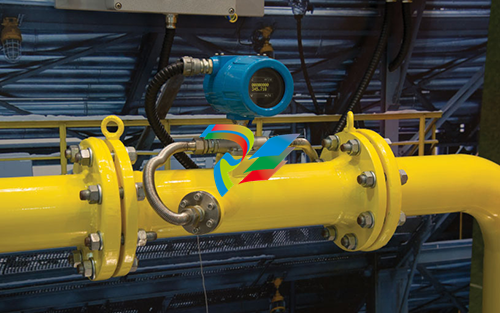
Instrumentation Lessons: Selecting and Sizing Flowmeters

No two flow measuring applications are the same, and two nearly identical flowmeter products can differ in how the accuracy is measured.
Flow rates and flow totals are two of the key types of measurements used in process facilities around the world. No matter the process industry, there will always be a wide variety of flow measurements that must be made for monitoring, control, and regulatory purposes. However, the appropriate selection and sizing of flowmeters are not something we can always take for granted.
Like any piece of equipment, instrumentation must be carefully selected so the measurements will be as accurate and repeatable as possible. Flowmeters are no exception. In industries where low-bid design and construction services are commonly used, it is even more important that the main aspects of properly sizing flowmeters are taken into account. In this article, we explain key considerations of sizing a flowmeter from the perspectives of accuracy, repeatability, and rangeability, as well as common installation pitfalls to avoid.
The measurement goal
The first aspect to think about when sizing a flowmeter is the expected flow range. Whether a flow rate is expected to be a fairly consistent narrow range, or the rate is expected to vary widely has a substantial effect on how a flowmeter should be sized.
In general, when sizing a flowmeter, conditions to consider include:
shutdown or rest state (and if the line will tend to drain)
the normal startup progression
the normal operating range (steady state)
the extreme operating range (steady state)
normal shutdown progression
any expected possible abnormal conditions.
A way to do this is by estimating a flow envelope using a table such as the sample shown in Table 1.

Accuracy versus repeatability versus rangeability
After the flow envelope has been determined for a flowmeter, the next aspect to consider is how well a proposed flowmeter can measure the flow. “Accuracy” refers to how close the flowmeter reading is to the actual flow value. “Repeatability” (also known as precision) is how consistent readings are over time. Accuracy and repeatability are not the same. The difference between accuracy and repeatability is shown in Figure 1.

Another way to understand the difference between accuracy and repeatability is to imagine two archers shooting at a conventional archery target. Suppose one archer hit the bull’s-eye consistently. Because he was always accurate, the shots were repeatable. Now imagine an archer who hit the target but consistently missed the bull’s-eye. Although the archer had good repeatability, he was not accurate. Good repeatability does not guarantee accuracy. If you do not see a proper accuracy statement on equipment, (i.e., there is only a repeatability statement), be cautious.
A flowmeter with good repeatability (but poor accuracy) can be adjusted to read more accurately. However, a flowmeter with poor repeatability cannot be adjusted, because there is no consistency in the readings.
“Rangeability” is a measure of how accurate and how repeatable the flowmeter will be over the expected range of flow readings. Some flowmeters are better at turndown (being able to read very low flow rates) than others. Thus, whenever an accuracy claim is being made for a flowmeter, it is important to look at the expected flow range accuracy that the vendor is guaranteeing.
Before looking at some of the more common flowmeter selection/sizing pitfalls, here is a more detailed discussion about defining accuracy and repeatability.
Accuracy impacts
It pays to read the fine print when it comes to accuracy claims (or specifications) associated with instrumentation such as flowmeters. At lower flow rates, the accuracy often drops off significantly. For example, if an instrument has an accuracy claim of 0.5 percent of full scale, it is important to recognize that the actual accuracy diminishes as the operating conditions fall below the full-scale setting.
Another way of stating accuracy is to define it in terms of the reading, such as ±0.5 percent of the reading over a certain part of the flowmeter’s range. Depending on the range in which the flowmeter is used, this stated accuracy could be either negligible or a significant difference. On flowmeters used for billing or other revenue-related purposes, the meter’s accuracy can have a major financial impact.
Imagine that a paddle-wheel flowmeter claims to have an accuracy of ±0.5 percent. Suppose further that it is a percent of the full range, and the full range is 50 feet per second (ft/s). If the flow range where you will use it is 6 ft/s, which is common in wastewater treatment plants, the actual accuracy is much different than you might expect:
0.005 × 50 f/s = ±0.25 ft/s
If you apply this accuracy against a flow rate of 6 ft/s, the actual accuracy is:
±0.25 / 6 ft/s = ±0.0417, or 4.17%
Comparing a magnetic flowmeter with an accuracy of 0.5% of reading to a doppler flowmeter with an accuracy of 0.5% of full range yields a similar result.



.jpg)
















































.jpg)
.jpg)





.jpg)



.png)
.jpg)

.jpg)
_lVjBYb.jpg)

.jpg)
.jpg)



.jpg)
.jpg)







.jpg)

.jpg)
.jpg)











.jpg)




.jpg)
.jpg)
.jpg)
.jpg)
.jpg)
.jpg)

.jpg)

.jpg)
.jpg)
.jpg)








